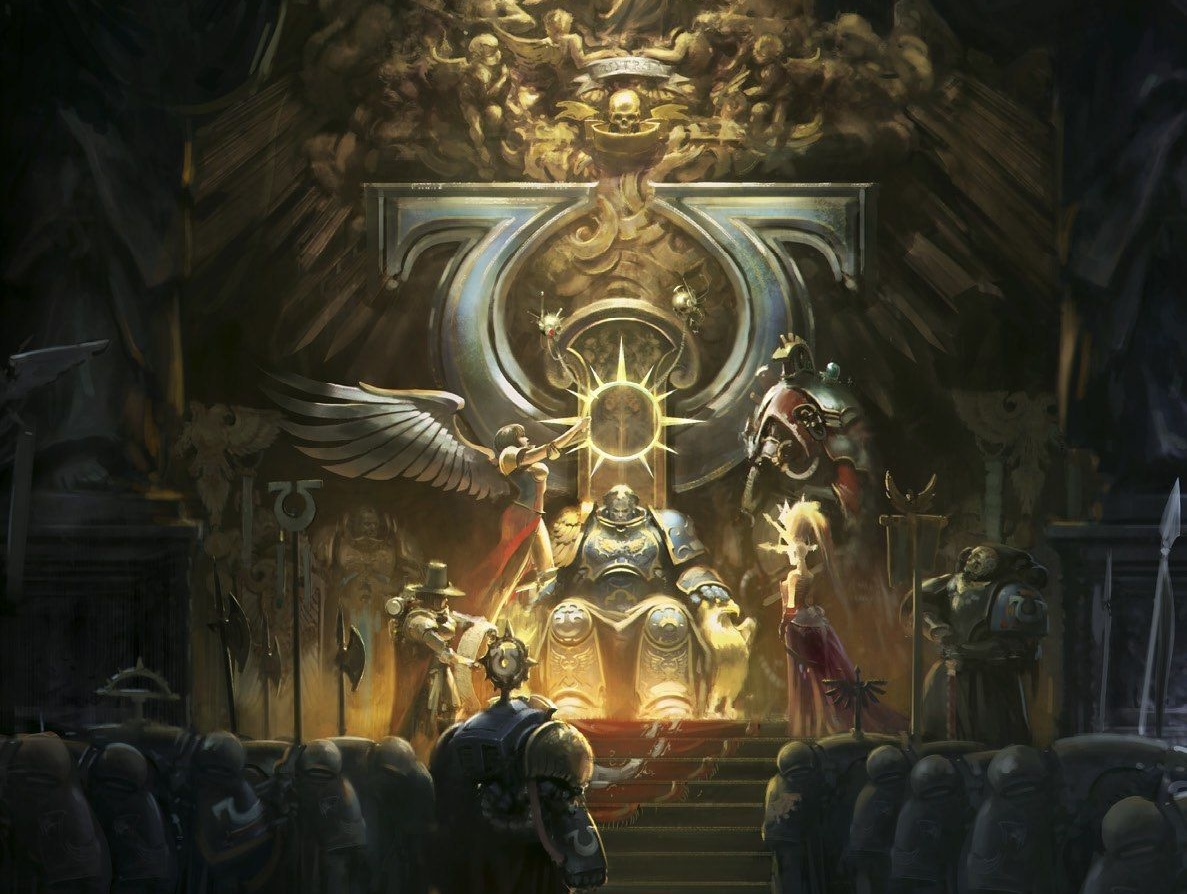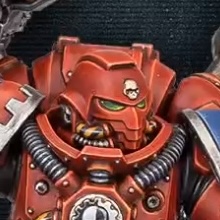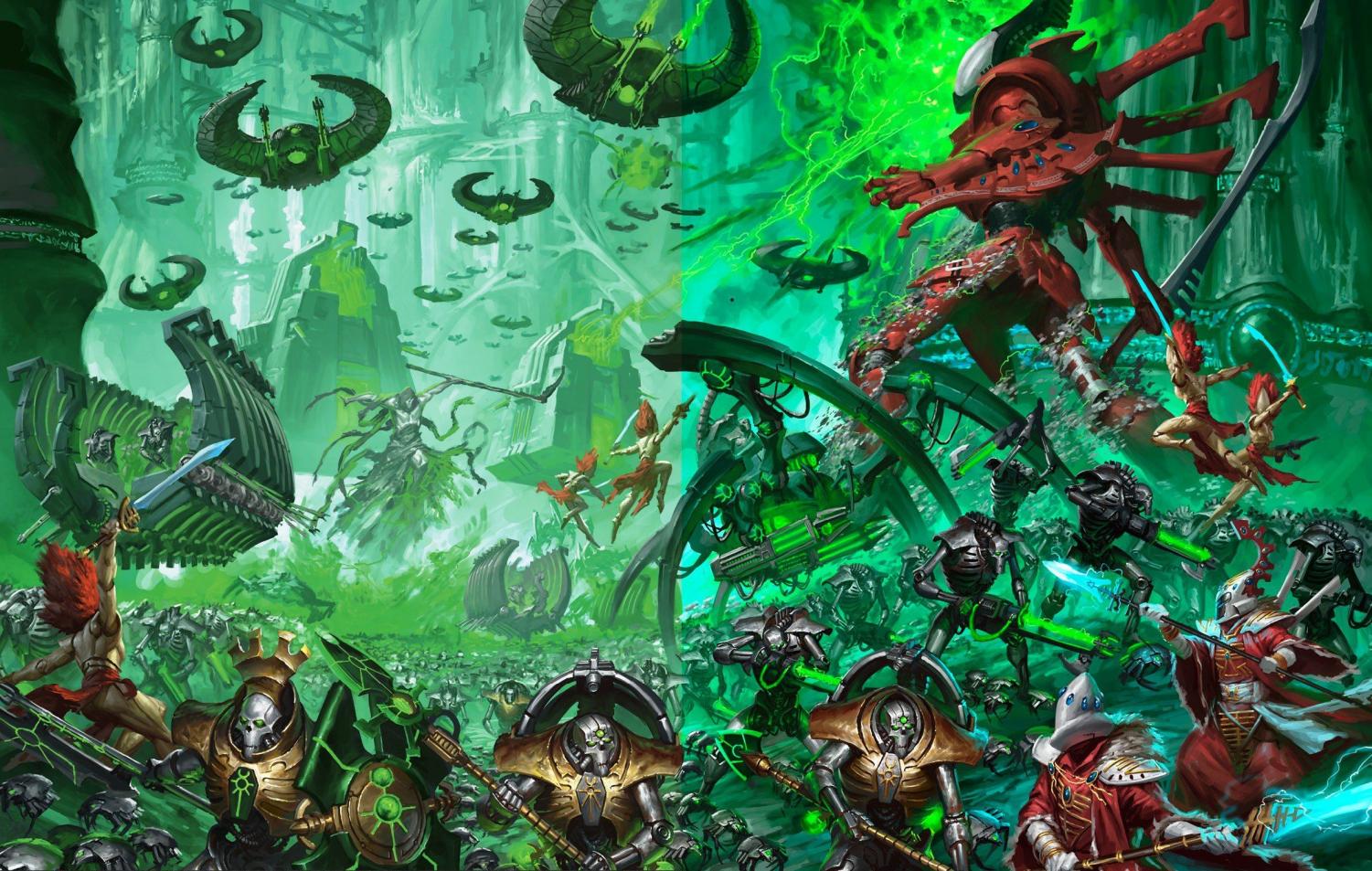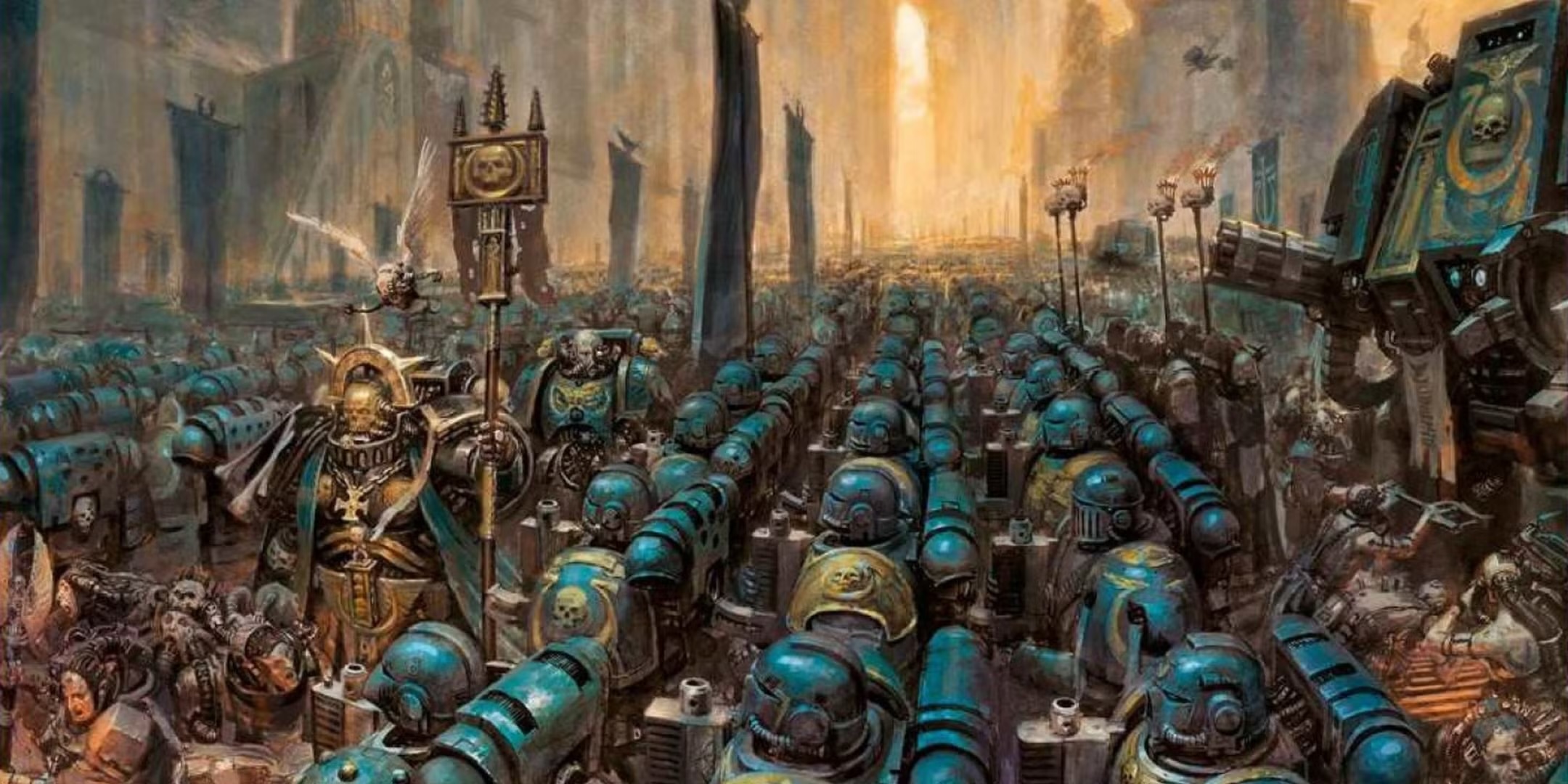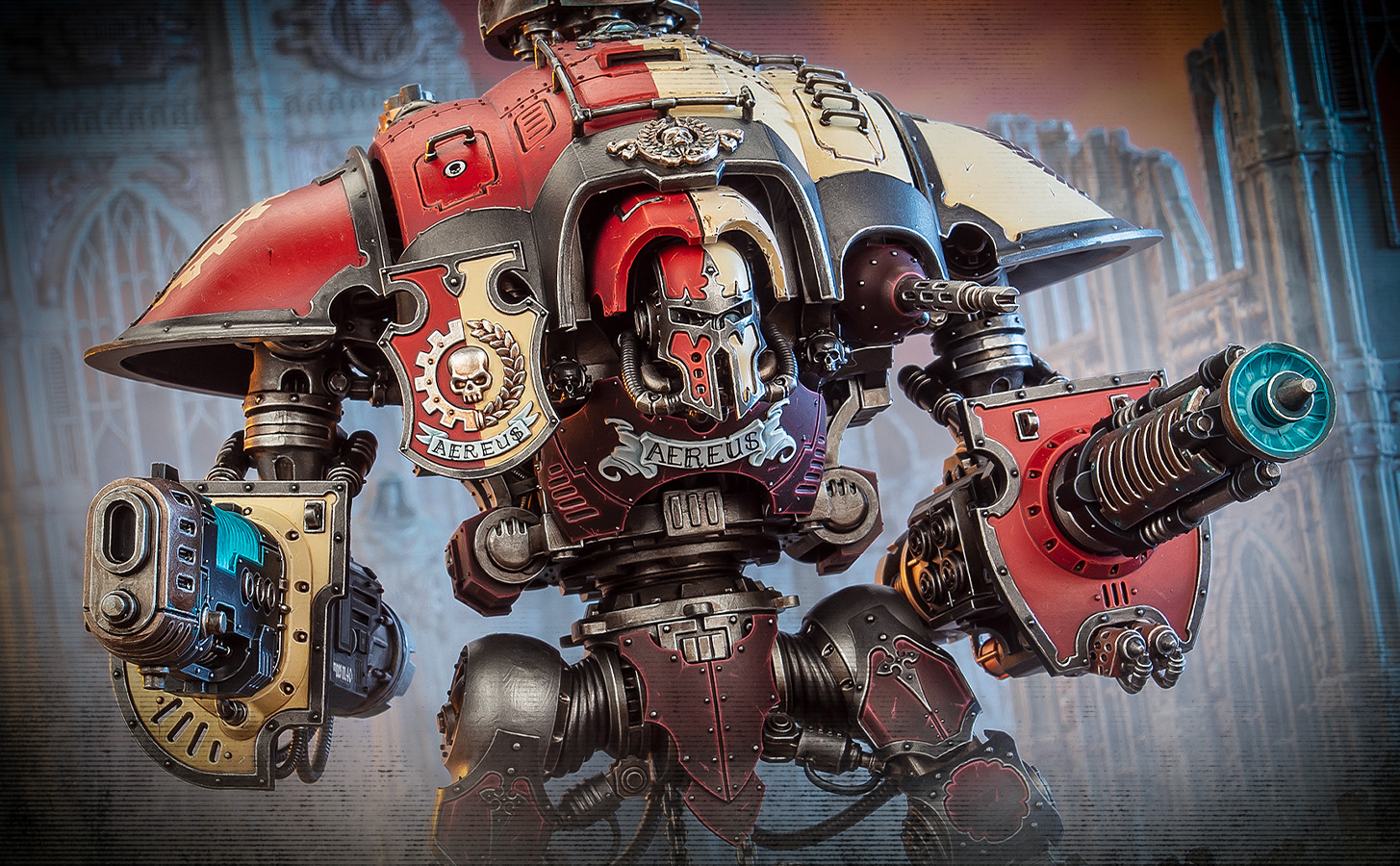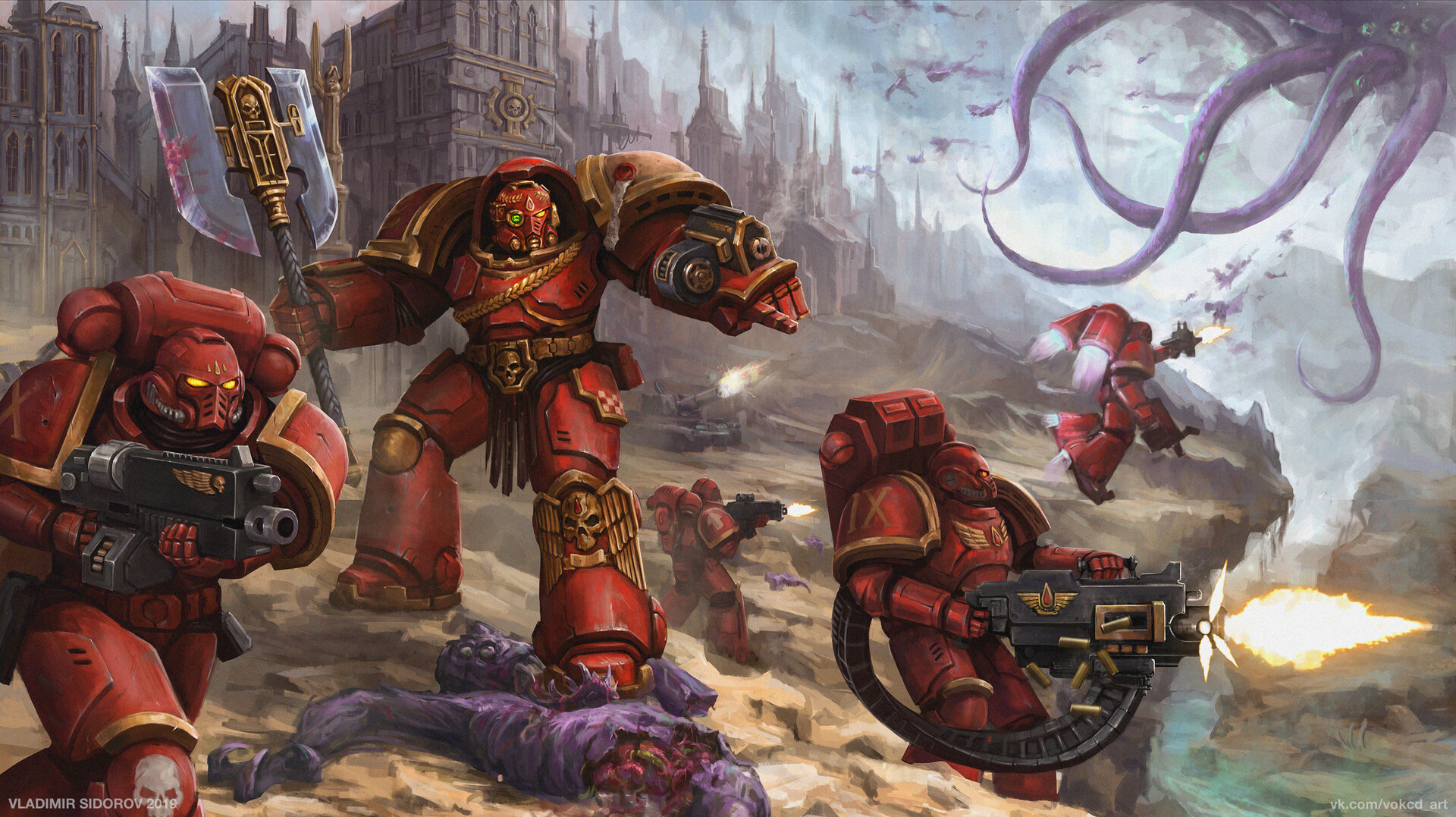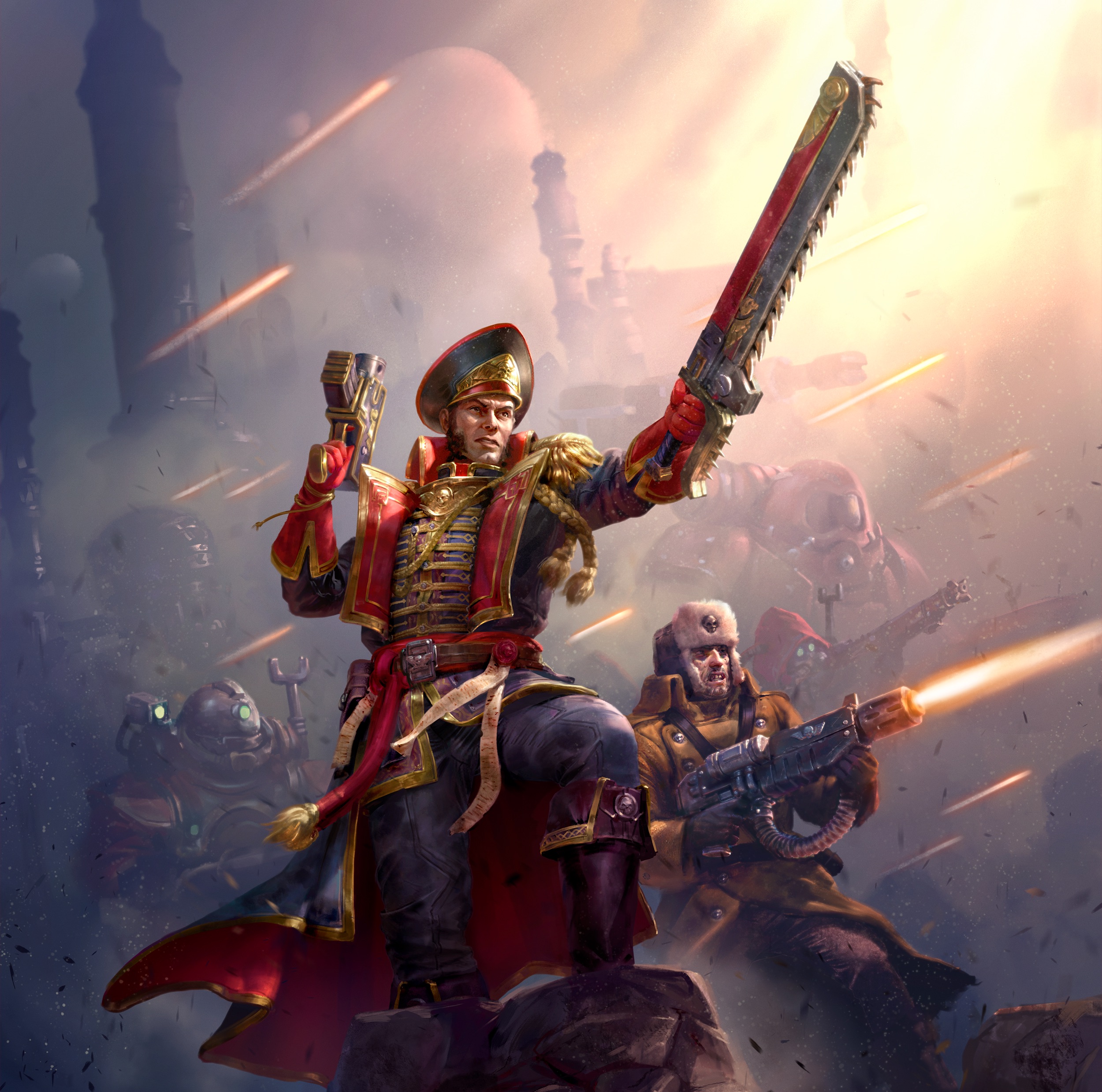The Great Crusade – Rise of the Imperium
In the late 30th Millennium, the Emperor of Mankind embarked on the Great Crusade, a galaxy-spanning campaign to reunite humanity’s lost colonies under one rule. This era (ca. 798.M30 – 005.M31) was a brief age of rebuilding and reconquest after mankind’s long isolation during the Age of Strife.
The Emperor led from the front, forging the Imperium of Man as his legions of superhuman Space Marines liberated world after world. Ancient Terra (Earth) had been unified by the Emperor, and now its armies struck out to the stars, reclaiming human worlds and vanquishing alien oppressors.
For a time it seemed the Golden Age of humanity had arrived – the Emperor walked among His people, His Primarch sons were rediscovered to lead their Legions, and countless worlds were brought under the Pax Imperialis. But this golden age was tragically short-lived, as a great betrayal was already brewing in the shadows of the Emperor’s nascent empire.
The Horus Heresy – Treachery and Civil War
The end of the Great Crusade came not from an external foe but from the Imperium’s own heart. In the early 31st Millennium, the Emperor’s favored son Horus Lupercal fell prey to the corrupting lure of Chaos and turned against his father. Declaring himself the Imperium’s new master, Horus led fully half of the Space Marine Legions in open rebellion.
The galaxy soon plunged into the nightmare of the Horus Heresy, a conflict so apocalyptic it is also called the Age of Darkness. This was the first and most devastating civil war in Imperial history, lasting several brutal years and nearly destroying the fledgling Imperium of Man. Brother fought brother across innumerable worlds as the traitor Marines sought to overthrow the very empire they helped create.
Loyalist forces were massacred in surprise attacks (such as the Drop Site Massacre on Isstvan V), entire planets burned, and the authority of the Emperor was sundered as Horus’s armies carved a bloody path to Terra. Eventually, the traitor Warmaster reached the Sol System itself, and a desperate final battle was joined on Holy Terra – the Emperor’s palace besieged by the very legions that once proclaimed Him savior.
Despite the heretics’ fury, the war ended in defeat for Horus – though at a terrible price. In the final climactic confrontation aboard Horus’s battle barge, the Emperor personally faced his wayward son. In an agonizing duel, the Emperor finally struck Horus down, obliterating the corrupted Warmaster’s soul, but He Himself was mortally wounded in the fight.
Dying and crippled, the Emperor was hastily interred into the life-sustaining Golden Throne, a unique techno-organic device that now sustains His shattered body at the cost of ceaseless agony. With the Emperor’s injury and ascension to the Golden Throne, the Heresy came to an end – the remaining traitor forces fled or were driven back, and Terra was saved from complete destruction.
Yet the victory was pyrrhic. The Emperor of Mankind – humanity’s guiding light – was effectively lost to the world, his broken form unable to ever rise from the Throne. In his final moments of life, the Emperor had bought victory, but the dream of the Great Crusade died with Him. The Imperium had survived the civil war, but it was left without its leader and destined to struggle in the darkness of the aftermath.
The Age of the Imperium – Ten Millennia of Darkness
The ten thousand years following the Horus Heresy are known as the Age of the Imperium – an era of attrition, stagnation, and incessant conflict. In the immediate aftermath of the Heresy, the loyalist Primarchs and their forces purged the Imperium of remaining rebels during a campaign called the Great Scouring, driving the Traitor Legions into exile within the Warp rift called the Eye of Terror.
Yet despite these efforts to cleanse the realm, the scars of the Heresy ran deep. With the Emperor a silent, immobile god-figure on the Throne, and the Primarchs gradually disappearing (due to death, injury, or mysterious vanishings over the subsequent centuries), the Imperium lost nearly all of its demigod leaders. Rule fell to ordinary men – the High Lords of Terra, Ecclesiarchs, and countless bureaucrats – who, over millennia, transformed the Imperium into an oppressive theocracy obsessed with survival.
The early hope and reason of the Imperial Truth were slowly eclipsed by repression and superstition. By the passage of a few thousand years, the Emperor – once a living man who had championed science and secular unity – was venerated as the God-Emperor in a state religion, and technological progress had ground to a halt.
The Imperium became a colossus on the verge of petrification: still vast and powerful, but rigid, paranoid, and stuck in an ever-deepening medieval darkness. What little light remained from the Great Crusade’s ideals had been dimmed by fanatical dogma and the daily struggle to simply hold the rotting empire together.
Throughout these millennia, the Imperium endured untold trials – alien invasions, heretical uprisings, and even periods of anarchy – yet somehow it persisted through them all, though at terrible cost. Without the Emperor’s active guidance, each century saw humanity facing new crises that further eroded its strength and knowledge.
On numerous occasions, the Imperium nearly tore itself apart from within. One infamous example was the Age of Apostasy in the 36th Millennium, a time of brutal internecine strife. Five thousand years after the Heresy, a power-mad tyrant, High Lord Goge Vandire, seized control of the Imperium’s highest offices and plunged the galaxy into a nightmare of persecution and civil war. This Reign of Blood, as it became known, saw untold billions perish as fanatics and loyalists battled across the stars. Only the rise of a reformer, Sebastian Thor, and a mass rebellion against Vandire’s corruption managed to end the Apostasy and restore a measure of order.
Such internal conflicts, along with continuous wars against xenos (from the ancient Eldar to new threats like the Orks and others), meant that the Imperium’s long centuries were saturated in blood and turmoil. Each time humanity weathered a storm – be it an ork WAAAGH!, a demonic incursion, or a continental rebellion – its rulers would proclaim the Imperium undying. But each victory left the Imperium more depleted and dependent on brute faith. By the dawn of the 41st Millennium, the Imperium of Man had become a vast, war-wracked husk of its former glory – mighty in appearance, but beset on all sides and crumbling within.
The 41st Millennium – The Time of Ending
In the “present day” of Warhammer 40K (the late 41st Millennium), the Imperium has reached a breaking point. The epoch leading up to the year 999.M41 is aptly called the Time of Ending – an age when the Imperium’s myriad enemies all strike at once, and even the Emperor’s divine might seems to wane. Humanity stands upon the brink of annihilation. Rebellion, secession, and heresy fester within its borders, while the forces of Chaos unleash unending demonic incursions.
Sensing the weakness of a faltering Imperium, ancient and newly risen alien empires close in from every side. The Necrons, an undead machine race from aeons past, awaken on countless tomb-worlds and begin reclaiming their old dominions. The barbaric hordes of the Orks erupt in gargantuan invasions (such as the wars on Armageddon), testing the Imperium’s defenders to the limit. Ambitious young species like the T’au expand aggressively at the galaxy’s fringes, chipping away at Imperial territories.
And worst of all, an extragalactic horror has arrived: the Tyranids, vast swarms of bioengineered alien creatures, have poured into the Milky Way and begun devouring every world they encounter. Entire sectors are consumed by these Tyranid Hive Fleets, each leaving behind nothing but dead, desiccated planets.
The Imperium in the 41st Millennium finds itself beleaguered by more threats than ever before, fighting desperate wars on a thousand fronts with ever-dwindling resources. Every new year brings fresh disasters – from the plague-ridden zombie legions of Chaos to the sorcerous rampages of Traitor Marines – and humanity’s doom looms ever nearer in the gathering darkness.
In the closing years of M41, this storm of threats coalesced into a single apocalyptic event – the 13th Black Crusade of Abaddon the Despoiler. Abaddon, the greatest champion of Chaos since Horus, had spent millennia launching Black Crusades from the Eye of Terror, each an attempt to weaken the Imperium. The 13th Black Crusade (ca. 999.M41) was by far the largest: Abaddon raised the most massive Chaos armada seen since the Horus Heresy, determined to burn the galaxy and tear down the Imperium of Man once and for all.
Under his command, the forces of Chaos – Traitor Marines, heretic cultists, daemons, and alien mercenaries – burst forth from the Eye of Terror in a fury. War engulfed the Segmentum Obscurus on an unprecedented scale. Despite valiant Imperial resistance, the nightmare scenario came to pass: the fortress world of Cadia, lynchpin of the Imperium’s defenses in the Cadian Gate, fell.
After a bitter, planetwide war, Abaddon unleashed a doomsday weapon by crashing a captured Blackstone Fortress into Cadia’s surface. The impact obliterated the planet’s crust and neutralized Cadia’s mysterious Necron-built pylons – devices which had long held back the energies of Chaos. With those pylons shattered, the raw power of the Warp erupted like a tsunami.
Cadia broke apart under the onslaught, and reality itself was rent open above its ruins. In the wake of Abaddon’s triumph, the Eye of Terror – the great Warp storm of Chaos – expanded uncontrollably, ripping a gigantic fissure through the fabric of space. The 41st Millennium ended in utter catastrophe: the heart of the Imperium was now exposed, and an even darker era was about to begin.
The Dark Imperium – The Great Rift and its Aftermath
The destruction of Cadia did not merely ruin a single world – it tore the galaxy itself in half. In the early 42nd Millennium, the eruption of Warp energy at Cadia’s demise gave birth to the Cicatrix Maledictum, commonly called the Great Rift.
This colossal Warp rift spread from the Eye of Terror clear across the galaxy to the distant galactic east. In practical terms, the Great Rift divided the Imperium into two vast territories, sundered by an impassable hellstorm of Warp energies. On the side closer to Terra (the galactic west), the Imperium endures as Imperium Sanctus, still able to receive the light of the Astronomican and some aid from the Imperial heartland. On the far side of the rift (the galactic east), however, lies the aptly named Imperium Nihilus – the Dark Imperium – a realm cut off from Terra’s light, where billions of humans now exist in a state of near-perpetual night and terror.
In the immediate aftermath of the Great Rift’s formation, a galaxy-wide blackout known as the Noctis Aeterna (“Eternal Night”) occurred: the Emperor’s psychic beacon on Terra was obscured by warp-storm turbulence, leaving countless Imperial systems lost and unreachable. With communications and warp travel crippled, whole sectors went dark. Across the Imperium Nihilus, panic and anarchy reigned – for a time, it was as if Hell had swallowed half the galaxy.
Predatory Warp storms of unprecedented fury raged out of the Great Rift, isolating planets and systems without warning. Separated from the wider Imperium, innumerable worlds were overrun by daemons or fell to madness and heresy in the darkness. The gates of Hell had indeed burst open, and the Imperium was broken and bleeding, forced to fight for its very soul in a galaxy sundered by Chaos.
Yet even as all hope seemed lost, the Emperor’s will proved that it had not abandoned humanity. In this bleakest hour, a hero of legend returned to rally the Imperium. Roboute Guilliman, Primarch of the Ultramarines – one of the Emperor’s immortal sons from the time of the Great Crusade – was miraculously resurrected in 999.M41.
Awoken from ten millennia of stasis by arcane Imperial technology and alien aid, Guilliman emerged into a galaxy on the brink of oblivion. Shocked by the state of the Imperium but determined to save mankind, he traveled to Terra and assumed the title of Lord Commander of the Imperium. With the Emperor incapable of ruling, Guilliman took up the burden of leadership and formulated a last, grand plan to restore the Imperium’s fortunes.
Gathering the largest Imperial fleets and armies seen in ages – including newly created Primaris Space Marines engineered for this new era – Guilliman launched the Indomitus Crusade. This crusade was a massive, multifleet counter-offensive aimed at reconquering lost Imperial territories and re-establishing communications and defense across the split galaxy.
Setting out from Terra in the wake of the Great Rift’s birth, the Indomitus Crusade battled across countless war zones to defend humanity. Its purpose was nothing less than to defend and reclaim the Imperium from the surging forces of Chaos and voracious xenos threats that had erupted everywhere in the darkness.
For twelve standard years and more, Guilliman’s crusading fleets fought desperate wars on all fronts – from pushing back daemon armies spilling from the Rift, to battling ork hordes and Tyranid swarms that took advantage of the chaos. Slowly but surely, some semblance of stability returned. The Astronomican’s light was reignited, restoring guided warp travel to many regions.
Worlds cut off by the storms were liberated or at least contacted and given aid. The Imperium Sanctus largely held firm, and even parts of Imperium Nihilus were saved from total collapse as Guilliman’s forces (and allied Adeptus Astartes Chapters) braved the warp storms to reach them.
The Indomitus Crusade thus bought the Imperium precious time and breathing room. Under Guilliman’s leadership, the Imperium of Man has managed to avert immediate oblivion and shore up its defenses – it was “stabilised from imminent collapse,” as the chronicles say.
But the Imperium’s survival remains hanging by a thread. Guilliman’s crusade may have ended its first phase in triumph, but the war for humanity’s survival is far from over. The galaxy remains brutally divided by the Great Rift, and the Imperium Nihilus still endures a nearly constant state of siege, cut off from easy support.
Though billions of Imperial citizens now hail Guilliman as a savior, the Primarch himself knows that not even he can undo ten thousand years of decay overnight. He has enacted sweeping reforms – reorganizing the Space Marines, restructuring the Imperium’s governance, and rallying all loyalist forces for the struggles ahead – yet unending war is now the fundamental state of the galaxy.
The Age of the Dark Imperium has truly begun, a time as desperate and bleak as any in human history. On one side of the rift, the Imperium’s core worlds fight to maintain what little order they can; on the other, isolated colonies fight simply to see another day.
The forces of Chaos, emboldened by the massive rent in reality, continue to spill forth in ever greater numbers. Xenos predators like the Tyranids and Orks roam unchecked in many regions, sensing that the galaxy belongs to no one. Even Guilliman – a being from a brighter age – is said to walk in despair at the enormity of the task before him. And still, the Emperor sits silent upon the Golden Throne, a dying god keeping a flicker of hope alive.
In the 42nd Millennium, the Imperium of Man perseveres – but just barely. What was once a glorious crusade of enlightenment has transformed into a grim battle of attrition against fate itself. The Imperium is a shadow of its height, divided and scarred, yet it refuses to perish. On countless worlds, humanity fights on with fanatical faith, believing that as long as the Golden Throne’s light burns, there remains a chance to avert the final darkness.
It is a dark time, the darkest the Imperium has ever known – an age of weary heroes and apocalyptic wars, where even salvation wears the face of a stern warrior out of legend. In this grim darkness of the far future, there is only war, and mankind’s future hangs in the balance.
The timeline of Warhammer 40K, from the Great Crusade to the Dark Imperium, is a saga written in blood and sorrow – a stark reminder that every victory is fleeting, and that the price of survival is eternal suffering and sacrifice.
